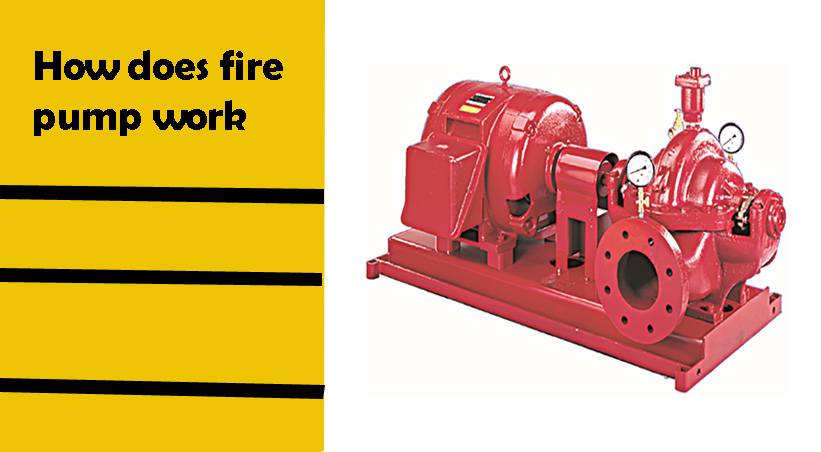In the realm of fire safety, there’s a crucial yet often overlooked hero: the fire pump. When flames rage and disaster strikes, these unassuming devices kick into action, working tirelessly behind the scenes to protect lives and property. In this article, How does fire pump work? we’ll delve into the inner workings of fire pumps, demystifying their operation and shedding light on their vital role in firefighting.
What is a Fire Pump?
A fire pump is a specialized piece of equipment designed to enhance the pressure and flow of water within a fire protection system. Its primary function is to ensure a reliable and steady water supply for firefighting purposes. In simple terms, a fire pump is the heart of a building’s fire protection system, responsible for delivering water to where it’s needed most.
Types of Fire Pumps
There are primarily two types of fire pumps:
1. Centrifugal Pumps: These are the most common type of fire pump. They work by using an impeller to create a flow of water by centrifugal force. As water enters the pump, it’s rapidly spun around and ejected at a high pressure.
2. Positive Displacement Pumps: These pumps operate by trapping a specific volume of water and then forcing it into the discharge pipe. Positive displacement pumps are commonly used for high-pressure applications and are particularly effective when dealing with viscous fluids.
How does fire pump work?
Fire pumps boost water pressure to supply fire fighting systems, ensuring reliable access to water during emergencies for fire control.
The Key Components of Fire Pumps
A typical fire pump system comprises several essential components:
- Water Source: This can be a dedicated water tank or a connection to the municipal water supply.
- Intake Valve: This valve regulates the flow of water into the pump.
- Impeller: In centrifugal pumps, the impeller is responsible for creating the necessary water pressure.
- Motor: The motor powers the pump’s operation.
- Discharge Valve: This valve controls the flow of water from the pump into the fire protection system.
The Process of Fire Pumps
- Water Intake: The fire pump system starts by drawing water from its source, which can be a dedicated tank or a city water supply.
- Pressure Boost: Inside the pump, the water is pressurized as it passes through the impeller or positive displacement mechanism. This pressure boost is essential for delivering water to the firefighting equipment at an adequate rate.
- Distribution: The pressurized water is then pushed through a network of pipes and hoses, ensuring a consistent supply to fire sprinklers, hydrants, or other firefighting tools.
- Control System: Modern fire pump systems are equipped with advanced control systems that monitor water pressure and flow. These systems can automatically activate the pump in case of a fire emergency, ensuring a swift response.
Importance in Fire Safety
Fire pumps play a pivotal role in fire safety for several reasons:
- Reliability: Fire pumps are designed to work when they are needed most, ensuring a consistent water supply even in adverse conditions.
- Pressure Maintenance: They maintain the required water pressure, allowing firefighting equipment to function effectively.
- Compliance: Many building codes and regulations mandate the installation of fire pumps to meet safety standards.
Conclusion
Fire pumps are the unsung heroes of fire safety, quietly standing by until the moment they are needed most. Their ability to provide a reliable source of water pressure can be the difference between a manageable fire and a catastrophic disaster. Understanding How does fire pump work? is not just a matter of curiosity; it’s a critical aspect of ensuring the safety of lives and property. So, the next time you see a fire pump, remember the vital role it plays in keeping us safe.

